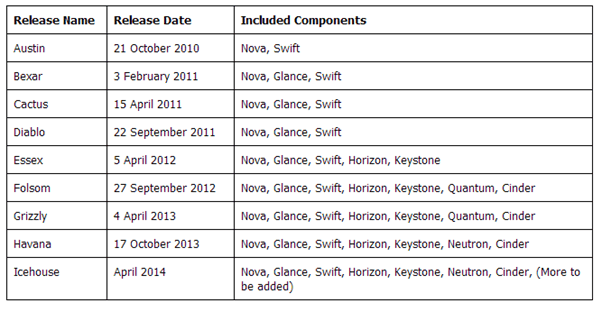(Tutorial) An Introduction to Openstack Project | Part 1
- February 26, 2014
Introduction to OpenStack
The OpenStack project is an open-source cloud-computing platform for private, public and hybrid clouds that’s simple to implement, massively scalable, and feature-rich. OpenStack provides an Infrastructure as a Service (IaaS) solution through a set of interrelated services.OpenStack was started in 2010 as a joint venture between RackSpace Hosting and the National Aeronautics and Space Administration (NASA). Today more than 200 companies have joined the project, including AMD, Canonical, Cisco, Dell, EMC, Ericsson, Groupe Bull, HP, IBM, Inktank, Intel, NEC, Red Hat, SUSE Linux, VMware, and Yahoo!The project is now managed by the OpenStack Foundation, a non-profit corporate entity established in September 2012 to promote OpenStack software and its community. The community collaborates around a six-month, time-based release cycle with frequent development milestones.OpenStack Releases:
The following is a conceptual architecture diagram showing the relationships between OpenStack services:

Overview of OpenStack Services
Keystone
The OpenStack Identity Service (Keystone) provides authorization and authentication for users and also manages service catalogs. It’s equivalent to AWS Identity and Access Management (IAM).
Glance
The OpenStack Image Storage Service (Glance) stores and manages virtual machine images in different formats. These images are used by compute service to provision instances. It’s comparable to AWS AMI (Amazon Machine Image).
Cinder
The OpenStack Block Storage Service (Cinder) provides persistent block storage to guest virtual machines for expanded storage, better performance, and integration with enterprise storage platforms. It’s similar to AWS EBS (Elastic Block Storage).
Neutron
The OpenStack Network Service (Neutron) enables network-connectivity interface devices managed by Compute. It enables users to create and attach interfaces to networks. It corresponds to AWS Networking.
Nova
The OpenStack Compute Service (Nova) provisions instances on user demand. It supports most virtualization technologies. It’s analogous to Amazon’s EC2 (Elastic Compute Cloud) environment.
Swift
The OpenStack Object Storage Service (Swift) provides a cost-effective, scale-out, redundant, scalable and fully-distributed API-accessible storage platform that can be integrated directly into applications or used for backup, archiving and data retention. It’s equivalent to Amazon’s S3.
Ceilometer
The OpenStack Metering/Monitoring Service (Ceilometer) monitors and meters the OpenStack cloud for billing, benchmarking, scalability, and statistics gathering. It’s comparable to AWS CloudWatch.
Heat
The OpenStack Orchestration Service (Heat) is a template-driven engine that allows automated infrastructure the deployment through both an OpenStack-native REST API and a CloudFormation-compatible Query API. It’s similar to AWS CloudFormation.
Comparison of OpenStack Services with AWS services:
Did you find this useful?
Interested in getting tips, best practices and commentary delivered regularly? Click the button below to sign up for our blog and set your topic and frequency preferences.
Subscribe to our blog




